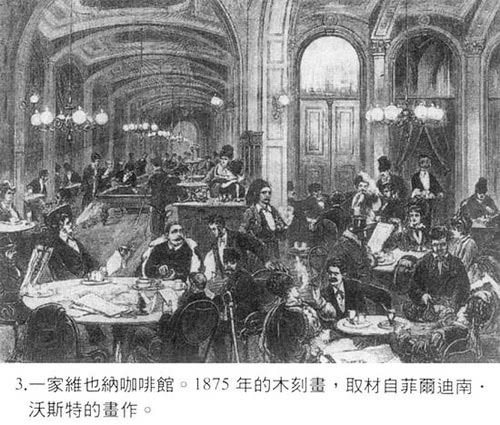History of coffee shops History of coffee drinking culture

At the beginning of the 17th century, Constantinople was the capital of the most powerful empire in Europe. When the British noticed the cafes here, they were already very popular in the Ottoman Empire.

The construction of a magnificent cafe became the first important move of the Ottoman rulers after conquering a city to demonstrate the civilization of their rule. At that time, some British travelers and businessmen thought that Islam banned alcohol, so the Turks used coffee instead of wine. They did not have a bistro like London or the Ayre Brewery in England, but they had cafes.
Constantine
According to Turkish historian Petcheville? According to the records of Ibrahim I in 1635, it was not until 1554, during the reign of Suleiman I, that the coffee shop first appeared, and the two Syrians each opened a coffee shop in Constantinople, near the noisy market near the port and the Passa mosque. The museum is equipped with clean mats and blankets, and the charge is very cheap.
The Turks soon fell in love with the cafe, which they regarded as the best place to rest, entertain and make friends. Later, even palace officials, senior civil and military officials and upper-class members of the public went in and out of the cafe.
The British have noticed that customers here are more likely to sit on stools on both sides of the street outside the cafe, talking like the British at Al Brewery, and if there is any news, talk about it on this occasion. The etiquette habit of drinking coffee reinforces egalitarianism. The great men of the city, such as the officials of the palace, the merchants and the Guards, not only met with ordinary people here, but they also got along with ordinary people on an equal footing, because all people got coffee in turn. Everyone sat down according to the order of arrival, not according to the usual Ottoman hierarchy.
(cafe culture is the witness of modern European history and civilization.)
In the 1650s, the first Christian cafe opened in London. In the mid-17th century, cafes became synonymous with business and news in London, and for a long time became a natural home for businessmen, scientific researchers and intellectuals, providing a unique place for business and politics with overlapping interests. Similar sites were quickly replicated in other towns. Oxford may be the second place to have a cafe after London. Pharmacist Arthur in 1655 or 1656? Tead opened a house on Hay Street facing the Church of all Souls. As a pharmacist, he is well suited to provide entertainment and guidance to these naturalists, and one of the rooms in his shop is used as a meeting place for a chemistry club, which is an important forerunner of the Royal Society.
But Tead's cafe soon no longer serves this small group of people, but begins to attract a wider range of customers from universities and cities. By the time the dynasty was restored, Oxford already had several cafes. In 1665, when Parliament moved to Oxford to escape the plague, a house in the seminary was opened up as a cafe to serve MPs. By the late 1660s, cafes had taken root in England. Almost every British city has at least one cafe where people gather to talk about news and do business.
Cafes have also spread overseas, especially in cities with a considerable number of British businessmen, typically run by people of Mediterranean origin. For British businessmen, one of the most profitable trade routes is across the Atlantic to the British North American colony.
One of the earliest cafes outside England was opened by British businessmen in Boston, Massachusetts Bay, in 1670-earlier than cafes in Paris, Venice or Vienna. Boston was then the largest British colonial city in North America.
In September 1690, Benjamin, an ambitious Puritan bookseller. Harris persuaded the Boston town council to issue him a permit to open a shop on King Street, near the downtown trading house, to sell coffee. He is familiar with London cafes and knows the power of coffee and publishing.
In North America, he continued to open bookstores, retailing books imported from London, publishing calendars and other things popular in Boston, all of which were sold directly on the counter of the Cafe London. In 1690, he began publishing a monthly report-- the first monthly report in the American colonies-- called "Public events," but was soon banned by the municipality without permission. In 1695, a competitor appeared-the cafe of Gartrig, Bartov's brother-in-law.
Bartoff was an influential theologian's publisher with a bookstore on the corner of Washington Street and Kurt Street in downtown Boston. Gartrig opened a cafe in the bookstore until 1711. A fire destroyed the whole area. By combining coffee with news, coffee shopkeepers such as Boston, who run part-time bookstores, have successfully replicated the typical urban culture of London. As a result, since the 1670s, cafes have become the core symbol of Boston's public administration, social life and prosperous business.
The "British headquarters" in North America
It was not until 1696 that New York had its first coffee shop. John, an English immigrant? Hachen opened his own King's arm Cafe on Broadway.
Hachen's cafe is modelled on the London Cafe model he knows. There is a large room upstairs, lined with tables covered with green tablecloths. Through the door, you can get to the balcony and enjoy the beautiful river view and wharf, so that the merchants can see the ship arriving at the port early. The new cafe immediately became an "informal headquarters for New York Britons", providing a home for "municipal and non-local officials, businessmen and port staff".
The opening of the cafe shows that mayor Benjamin? Under Fletcher, the number of Britons is growing, and Fletcher is trying to eliminate the influence of Dutch Calvinist settlers who are rebellious and make up the majority of the city's population. Fletcher not only promoted the cafe and held various celebrations for the Royal Festival among his subordinates, but also invited a bookseller from Philadelphia to settle in the city to support him in publishing a newspaper. With the emergence of the first cafe and the first newspaper, New York began to look like a regular British colony.
By 1701, the new mayor could boast that New York was "the fastest growing city in North America". In the joyous atmosphere of the King's arm Cafe, people from the "British Party" get together, sometimes talking about business and social rumors, and more often about news and politics. Over the next decade, New York City became more British, and Hachen's cafe occupied a central position in civic politics, hosting civilian committee meetings and colonial council meetings.
Any colonial city that hopes to grow quickly will need a cafe. Philadelphia opened one in 1703, owned by the postmaster, whose cafe was also an exchange for merchants. Cafes in the British colonies of North America attract respectable customers.
Important Notice :
前街咖啡 FrontStreet Coffee has moved to new addredd:
FrontStreet Coffee Address: 315,Donghua East Road,GuangZhou
Tel:020 38364473
- Prev

Moderate and rational Central and Northern European Coffee Culture is rational and mild
Unlike the Italians as enthusiastic, nor as romantic as the French, people in central and northern Europe drink coffee rationally and gently, just like their organized nationality. European life and coffee have become almost inextricably linked, except for the unusual way of drinking coffee in Italy and France, from Austria, Switzerland, Germany to the north.
- Next

The origin of cappuccino is also related to the name of a monkey.
The monks of the St. Franciscan Church (Capuchin), founded after 1525, all wore brown robes and pointed hats. When the St. Franciscan Church spread to Italy, the locals thought that the monks' clothes were very special, so they gave them the name Cappuccino. The Italian word refers to the loose robes and small pointed hats worn by monks, derived from the Italian headscarf, namely Cappuccio. Of course
Related
- How did the Salvadoran coffee industry develop in Central America?
- What exactly does the golden cup extraction of coffee mean?
- The Origin of Coffee flower
- [2023 Starbucks World Earth Day] there are more meaningful things besides free Starbucks coffee!
- What kind of coffee is there in Spain? 9 Flavors of Spanish Coffee
- Aromatic African coffee| Kenya's coffee culture and historical production area
- Liberica Coffee Bean knowledge: the characteristics of Liberian Coffee beans of the three original species of Coffee beans
- The origin and formula of Spanish latte introduces the taste characteristics of Bombon coffee in Valencia, Spain.
- How to adjust the solution of over-extracted coffee
- What is the tasting period of coffee beans? What is the period of coffee and beans? How should coffee wake up and raise beans?

